| Compact pickup truck; Built in USA |
|
|
| Good condition price range: $1,000 – $2,900* |
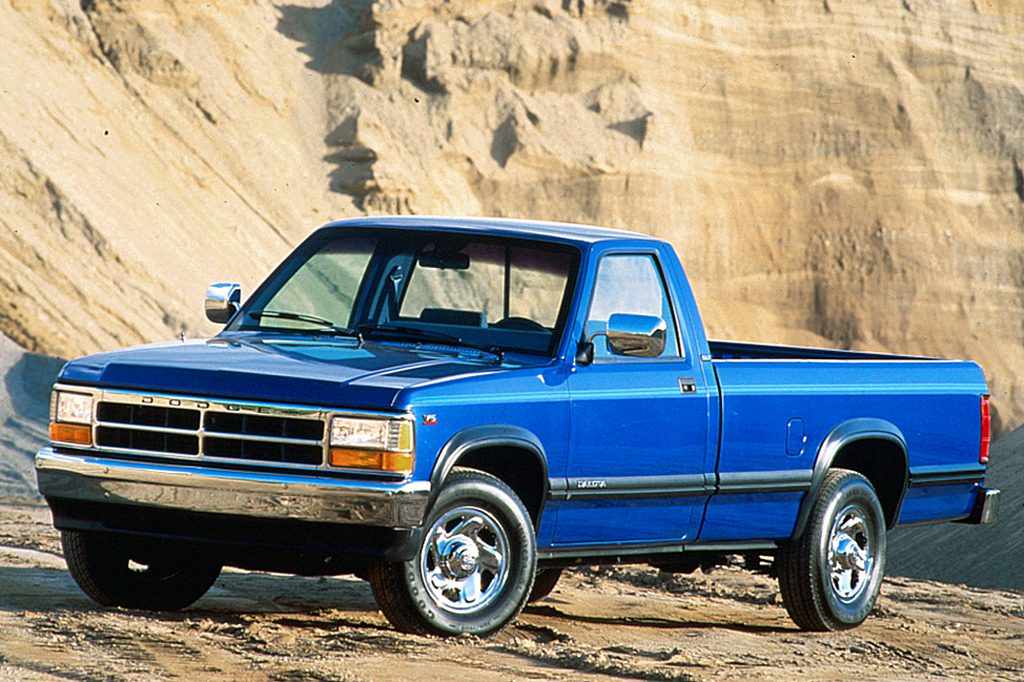
1994 Dodge Dakota Sport 4WD regular cab
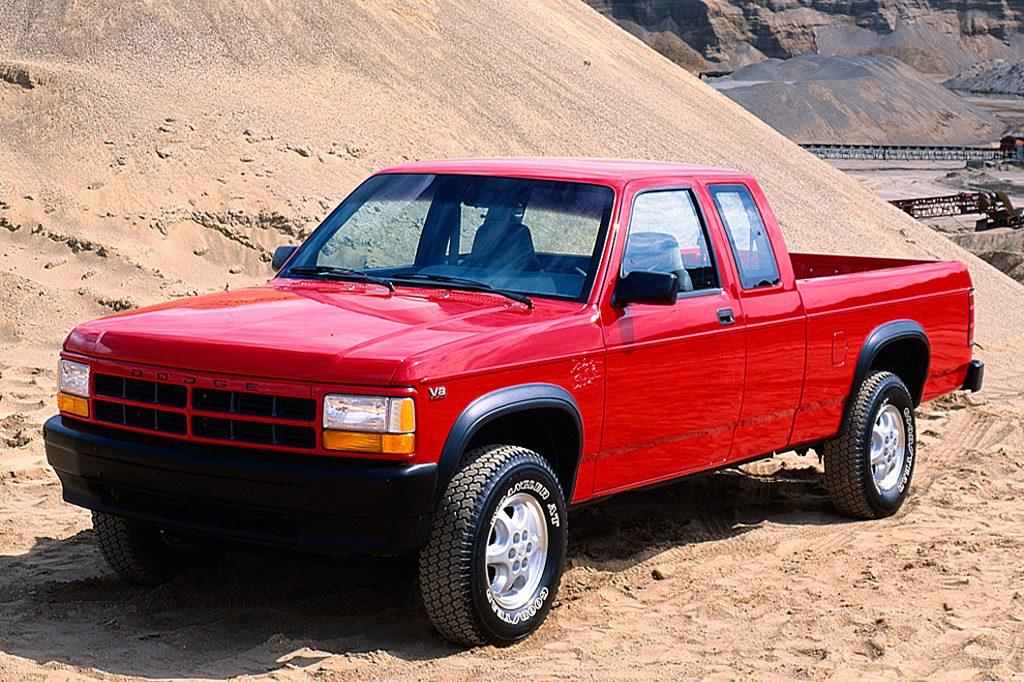
1994 Dodge Dakota Sport 4WD Club Cab extended cab
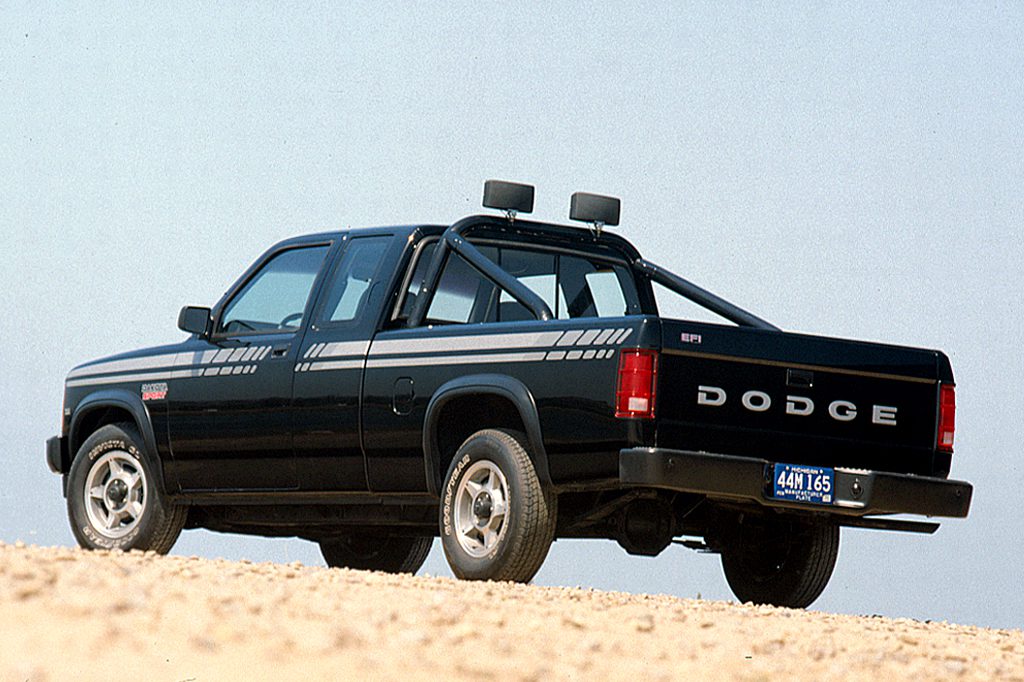
1990 Dodge Dakota Club Cab extended cab
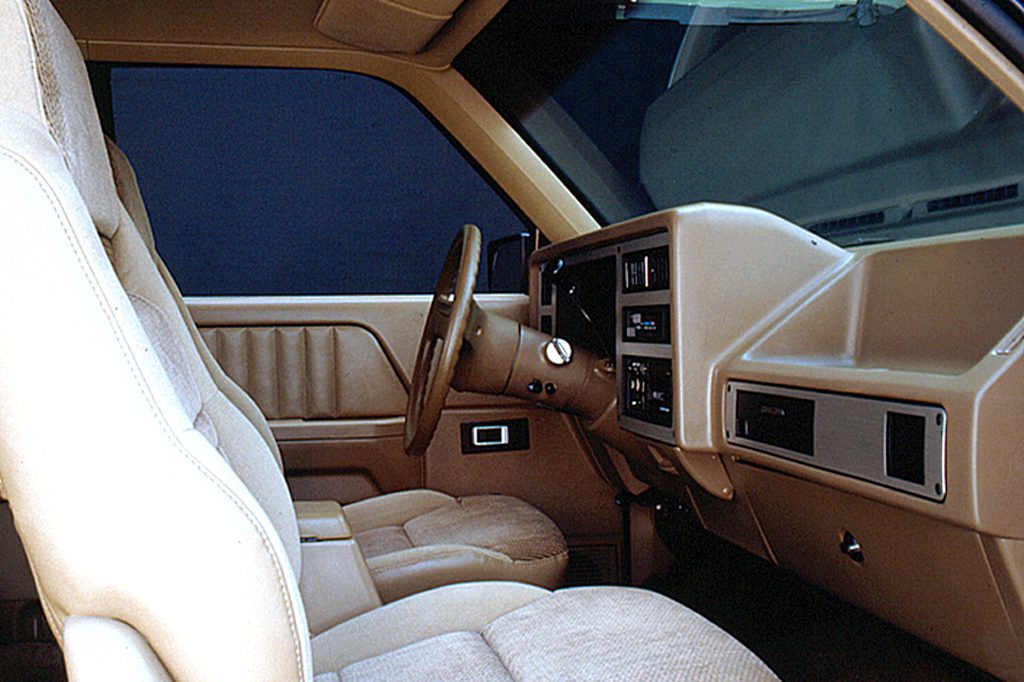
1990 Dodge Dakota interior
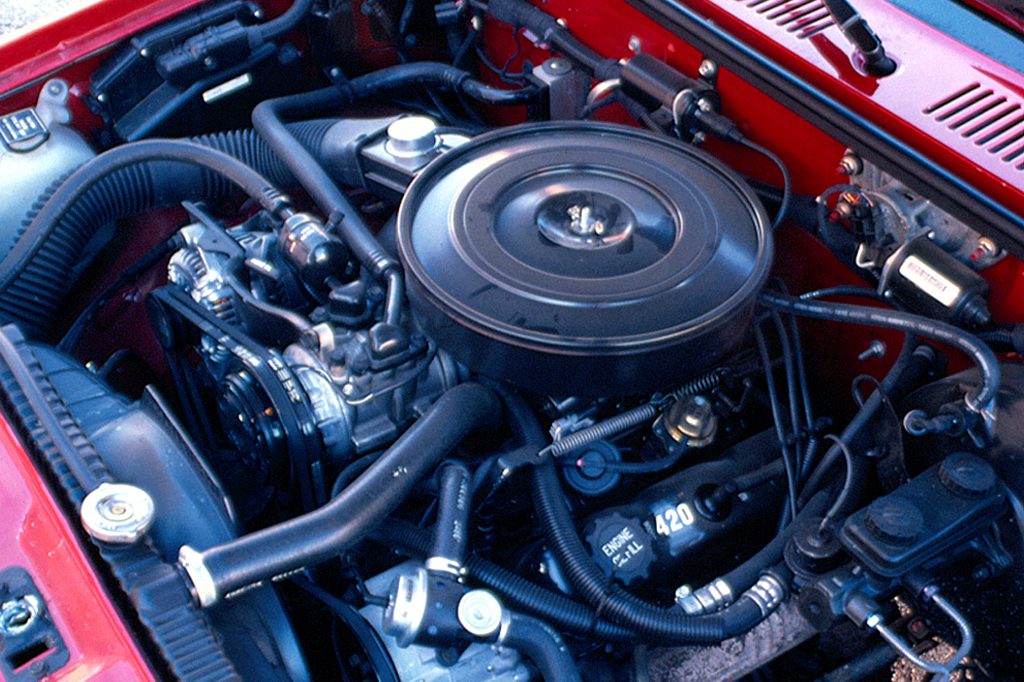
1990 Dodge Dakota engine
| Pros: |
|
| Cons: |
|
Solid and robust, a Dakota makes a good practical choice. A long-wheelbase version with the 8-foot bed might serve nearly as well as a full-size pickup.
Overview
Introduced for 1987, Dodge’s Dakota was the first midsize pickup–larger than most compacts and smaller than full-size models. Dakotas came in two sizes: 112-inch wheelbase with a 6.5-foot cargo bed, or 124-inch wheelbase with an 8-foot bed. Each had a 3-place bench seat, but bucket seats might be installed in base or Sport models. A Club Cab pickup arrived in 1990, with a 131-inch wheelbase and 6.5-foot bed, plus storage compartments beneath hinged rear cushions. Rear antilock brakes had been added for 1989. An innovative convertible pickup truck joined the line during 1989, with standard 3.9-liter V6, but remained on sale only into 1990.
Yearly Updates
| 1991 Dakota A V8 engine become available this year–the only such installation offered in a non-full-size pickup. In addition, the 4-cylinder base engine gained 17 horsepower. All Dakotas got a freshened front end, including a new grille and bumper. Nose sheetmetal was extended about three inches. LE and Sport models gained aero headlamps, while the Sport got a body-color grille and front air dam with fog lamps (plus a chrome roof bar with off-road lights). Club Cab trucks could now have 4-wheel drive. |
| 1992 Dakota Both V6 and V8 engines gained a whopping power boost. Horsepower jumped from 125 to 180 on the V6 and 165 to 230 on the V8. |
| 1993 Dakota Four-wheel antilock braking became available (a “first” for pickups of any brand). Dakotas got a stainless steel exhaust, seat cushions were recontoured, and 4-cylinder engines lost power. |
| 1994 Dakota Safety got the nod this season. Dakota became the first pickup with a driver-side airbag, accompanied by a new padded knee bolster, side door guard beams, and center high-mounted stoplamp. |
| 1995 Dakota A shift interlock was added to manual transmissions, and a 2WD Sport Club Cab model joined the 1995 lineup. |
| 1996 Dakota A new “Magnum” 4-cylinder base engine went into Dakotas for their final outing in this form. Automatic transmissions gained electronic shift controls. |
